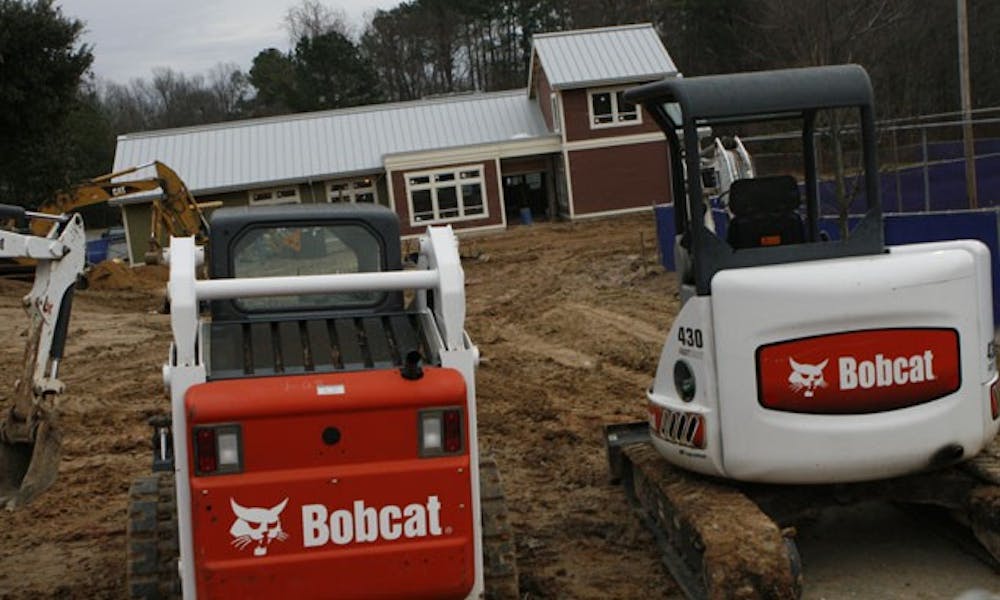The first step toward making Central Campus a better place to live is almost complete.
Next month will see the opening of Mill Village, a place where students can meet to eat, talk and work out. The project represents an effort by University administrators to make Central Campus more appealing to students despite Duke’s tightened purse strings.
“We want to create a uniquely Duke model of residential housing and living with a diverse social scene for casual meetings and greetings with a real student center,” said Steve Nowicki, vice provost and dean of undergraduate education.
Mill Village will be home to a restaurant, recreation center and media center when it opens in February. Uncle Harry’s General Store will also move there. There is currently no place to buy prepared food or work out on Central Campus, forcing students to travel to East or West.
“Now people won’t have to go all the way to West to eat or spend time with friends,” senior Christen Harsha said. “As a senior, it’s coming kind of late, but it’s about time we had something like this.”
Nowicki said he hopes the village will become an active social and study space for all Duke students, not just those on Central.
He also noted how the decision to place selective living groups like Ubuntu and SHARE on Central is a sign of the progress already made toward improving the campus. He added that having SLGs on Central will contribute to further progress.
Once Mill Village is completed, administrators will address other issues affecting Central students, such as safety and transportation.
While Central is generally perceived to be less safe than East and West Campuses, administrators have said that statistically, fewer crimes occur there.
“Statistics aren’t what matter to students and parents,” Nowicki said. “It is the perception of safety that really matters.”
Executive Vice President Tallman Trask said Duke plans to make subtle changes to make Central feel safer. Those changes include recent renovations to many Central Campus buildings, new fencing and street lights and an influx of police officers.
Administrators hope that a safer feel will draw more people to Central. To help them get there, administrators are working on developing more efficient and convenient transportation options as part of the second phase of Central improvement.
Currently, the buses that run through Central Campus take a circuitous route traveling from East, through Central and to West. There are few bicyclists and few walkers.
“Transportation remains the hardest part,” Nowicki said. “I know we’re not connected enough.”
Nowicki said he would like Duke to create a promenade connecting East, West, and Central Campuses to encourage students to walk and bike. He noted that encouraging students to walk and bike is both cost-effective and environmentally friendly.
The promenade would be the “defining feature” of Central Campus, Nowicki said. He added that other additions could include a larger recreation area and a 24-hour coffee house, something that would mimic The Perk’s popularity on West Campus.
“[I’m] most excited about approaching the improvement of resident housing with creativity, and upgrading everything from room interiors to campus landscaping,” Vice President for Student Affairs Larry Moneta said. “What we want to do is create the optimal residential experience for people all over campus.”
The current plans to improve Central Campus are a departure from Duke’s original plans to tear down the middle campus and build New Campus in its place.
The financial meltdown forced a rethinking of Central’s place in Duke’s future. Insufficient funds meant plans for New Campus had to be delayed—and that Central Campus needs to serve students for at least another 10 years.
“When the markets crashed we realized that we couldn’t ignore Central anymore,” Trask said. “So we decided that we would work on responding to students’ needs.”
Get The Chronicle straight to your inbox
Signup for our weekly newsletter. Cancel at any time.

